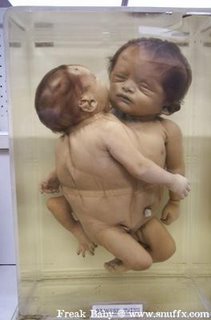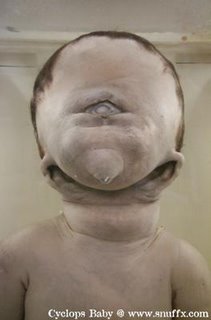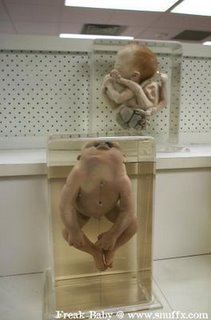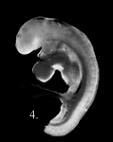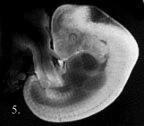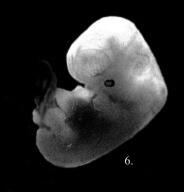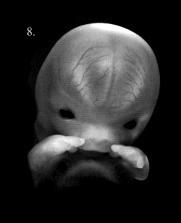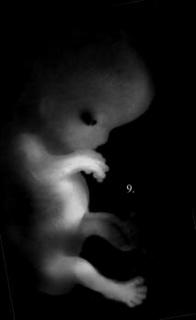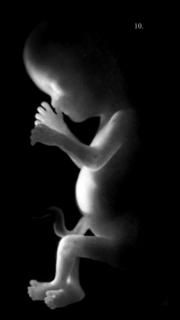PICTURES
...that awe, amazed and stupefy me...
Beauty Inside Our Body

Image of red blood cells.

The blood cells are traveling along a vein within the liver.

This bead-like structure with its projecting legs is a nerve cell. It sends signals and commands to and from the brain.

This dirty-looking surface is actually a healthy tooth. The cells in the green layer produce enamel, which protects the tooth.

A cross section of a piece of carpet? This is actually the small intestine where food is digested.

The surface of the tongue is rough due to these paillae, which contain the taste buds and send tactile information to the brain.

The cells lining the stomach secrete a layer of mucus to protect against the acidic gastric juices.

These crystals may look pretty, but the kidney stones they form can be extremely painful to pass through the urine.

These match-like structures are found in the brain and secrete a substance that cushions the brain and spinal cord against shock.

Rose petals scattered on a scarlet divan? This is actually the lining of the rectum.
Source: Inside The Body: Fantastic Images from Beneath the Skin.
Hunger
Think and look at these when you complain about your food...

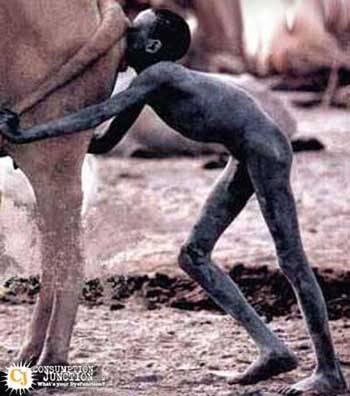
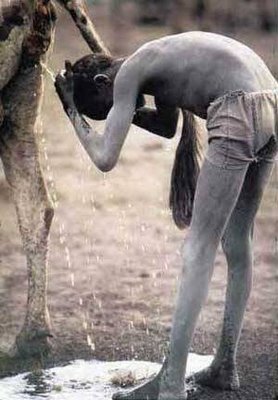
 A haunting photograph by Kevin Carter from the Sudan famine crisis of a small, starving Sudanese child being stalked by a vulture. However, Carter also came under heavy criticism for just photographing — and not helping — the girl.
A haunting photograph by Kevin Carter from the Sudan famine crisis of a small, starving Sudanese child being stalked by a vulture. However, Carter also came under heavy criticism for just photographing — and not helping — the girl.This criticism and the death of a close friend may have contributed to Carter's suicide at the age of 33. His suicide note read:
"I am haunted by the vivid memories of killings & corpses & anger & pain... of starving or wounded children, of trigger-happy madmen... The pain of life overrides the joy to the point that joy does not exist."
Google Earth
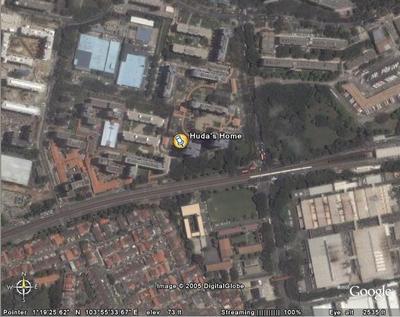
Want to know more about a specific location? Dive right in - Google Earth combines satellite imagery, maps and the power of Google Search to put the world’s geographic information at your fingertips.
Try it !
Another Sunset... ?
Day & Night - In a single glance

The photograph attached was taken by the crew on board the Columbia during its last mission, on a cloudless day.
The picture is of Europe and Africa when the sun is setting. Half of the picture is in night. The bright dots you see are the cities' lights.
The top part of Africa is the Sahara Desert.
Note that the lights are already on in Holland, Paris, and Barcelona, and that's it's still daylight in Dublin, London, Lisbon, and Madrid.
The sun is still shining on the Strait of Gibraltar. The Mediterranean Sea is already in darkness.
In the middle of the Atlantic Ocean you can see the Azores Islands; below them to the right are the Madeira Islands; a bit below are the Canary Islands; and further South, close to the farthest western point of Africa, are the Cape Verde Islands.
Note that the Sahara is huge and can be seen clearly both during day time and night time.
To the left, on top, is Greenland, totally frozen.
Watch Me Grow !
I can't get enough of it.
Foetus are really amazing !!

1 of 10
At eight weeks gestation, this foetus is able to kick and straighten his legs, turn them round and move his arms up and down.


3 of 10
At 22 weeks gestation babies are capable of fine hand and finger movements. In a short space of time this baby scratches, rubs and pats his cheek before doing the same to his nose.


5 of 10
This baby's brain has developed sufficiently to enable him apparently to sense the other parts of his body. He can bring his fingertips together so they touch.


7 of 10
Although grasping begins early it becomes better established during the last trimester. Babies grasp hands, feet, fingers, toes and, most commonly, their umbilical cords.


9 of 10
Foetuses as young as 11 weeks have been seen with their thumbs in their mouths. This baby started out sucking his smallest toes and gradually moves on to suck a bigger and better toe.
Foetus are really amazing !!
1 of 10
At eight weeks gestation, this foetus is able to kick and straighten his legs, turn them round and move his arms up and down.
2 of 10
At ten weeks gestation, this foetus can move her arms and legs with a range of movements that are fluid and supple.
At ten weeks gestation, this foetus can move her arms and legs with a range of movements that are fluid and supple.
3 of 10
At 22 weeks gestation babies are capable of fine hand and finger movements. In a short space of time this baby scratches, rubs and pats his cheek before doing the same to his nose.
4 of 10
This foetus exhibits behaviour identical to what he will do after birth,. If he's held upright on a flat surface he will try and move forward.
This foetus exhibits behaviour identical to what he will do after birth,. If he's held upright on a flat surface he will try and move forward.
5 of 10
This baby's brain has developed sufficiently to enable him apparently to sense the other parts of his body. He can bring his fingertips together so they touch.
6 of 10
From about 24 weeks of pregnancy when retinal development is complete, babies open and close their eyes intermittently. This helps a baby to perfect the blinking reflex, which will protect his eyes once he's born.
From about 24 weeks of pregnancy when retinal development is complete, babies open and close their eyes intermittently. This helps a baby to perfect the blinking reflex, which will protect his eyes once he's born.
7 of 10
Although grasping begins early it becomes better established during the last trimester. Babies grasp hands, feet, fingers, toes and, most commonly, their umbilical cords.
8 of 10
While newborns do not smile until 4-6 weeks after birth, babies in the uterus do. Maybe because the uterus is warm, comfortable, and shielded from loud noise and bright light.
While newborns do not smile until 4-6 weeks after birth, babies in the uterus do. Maybe because the uterus is warm, comfortable, and shielded from loud noise and bright light.
9 of 10
Foetuses as young as 11 weeks have been seen with their thumbs in their mouths. This baby started out sucking his smallest toes and gradually moves on to suck a bigger and better toe.
10 of 10
Babies produce a motion approximating to yawning from as early as 12 weeks' pregnancy. Maybe this is nature's way of ensuring that as soon as she enters the world, she'll be able to take her first breath.
Babies produce a motion approximating to yawning from as early as 12 weeks' pregnancy. Maybe this is nature's way of ensuring that as soon as she enters the world, she'll be able to take her first breath.
Subscribe to:
Comments (Atom)









